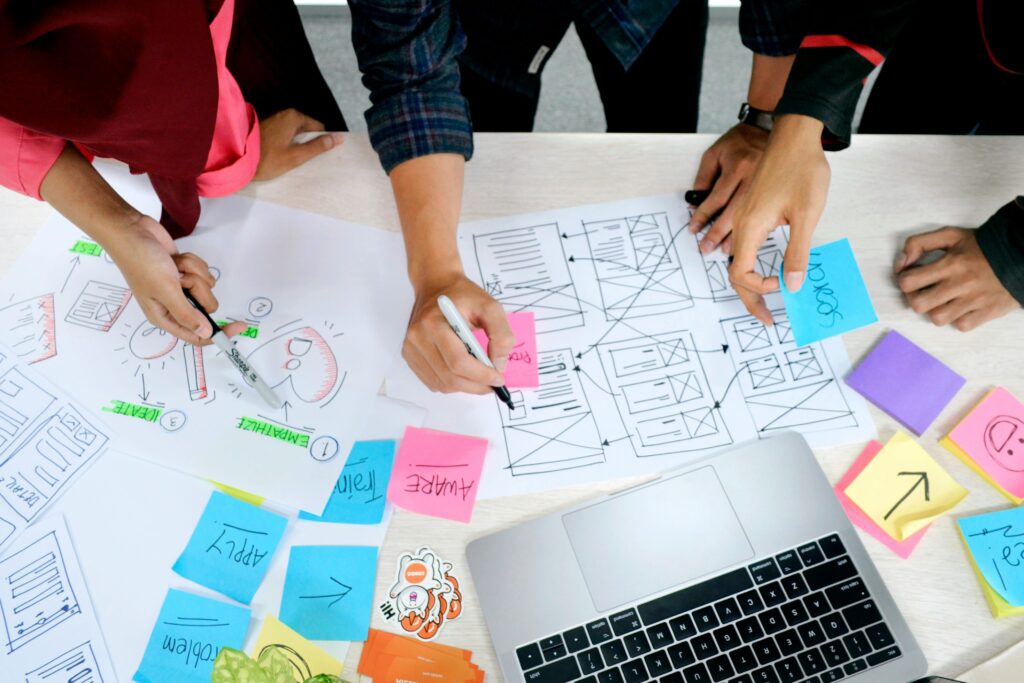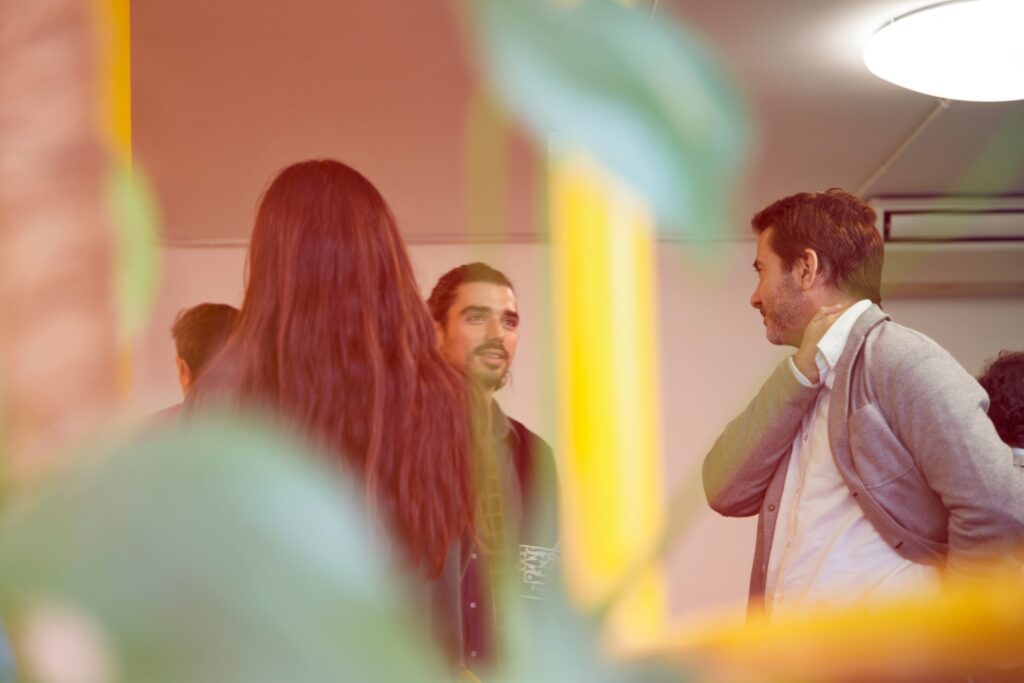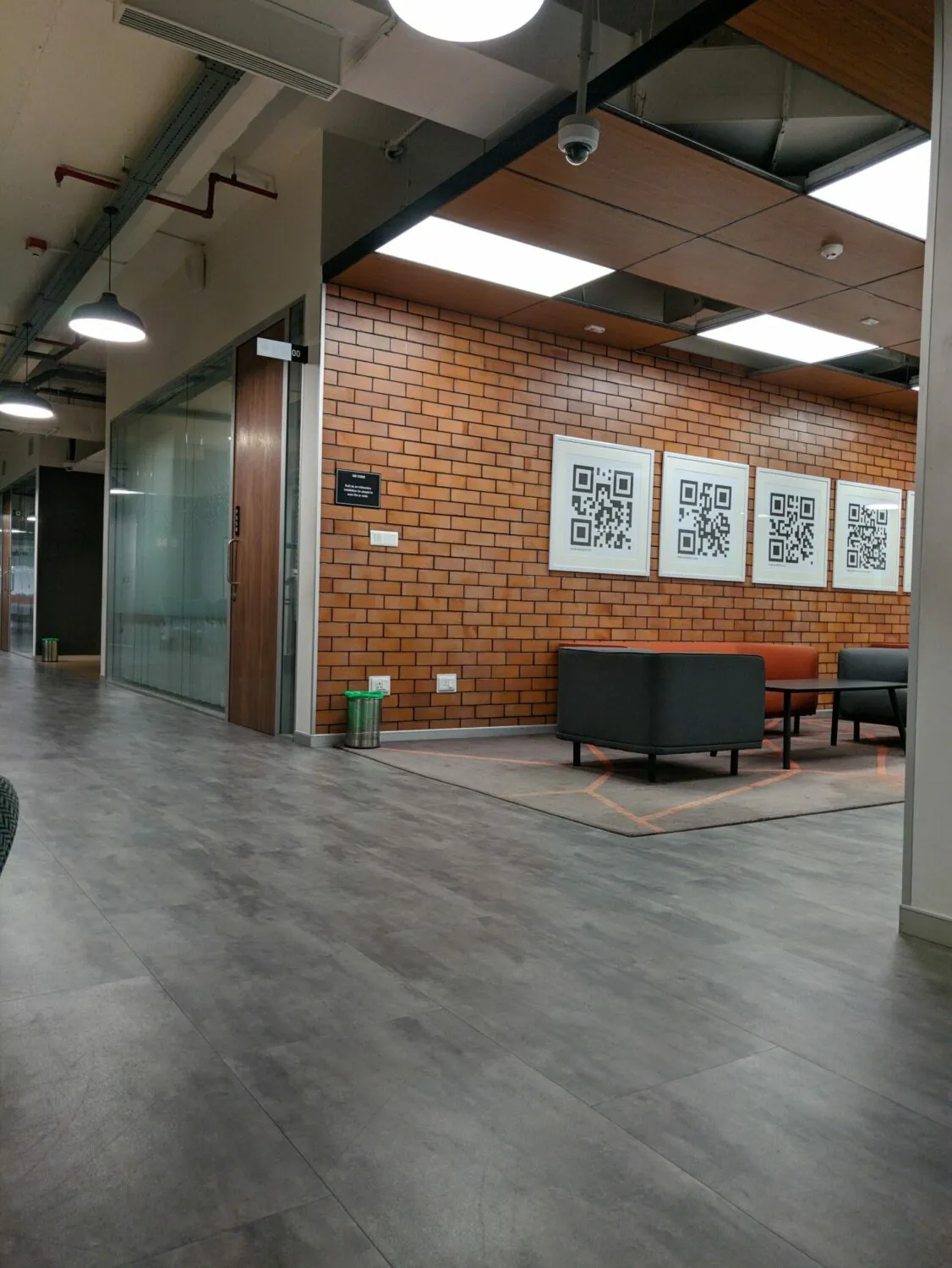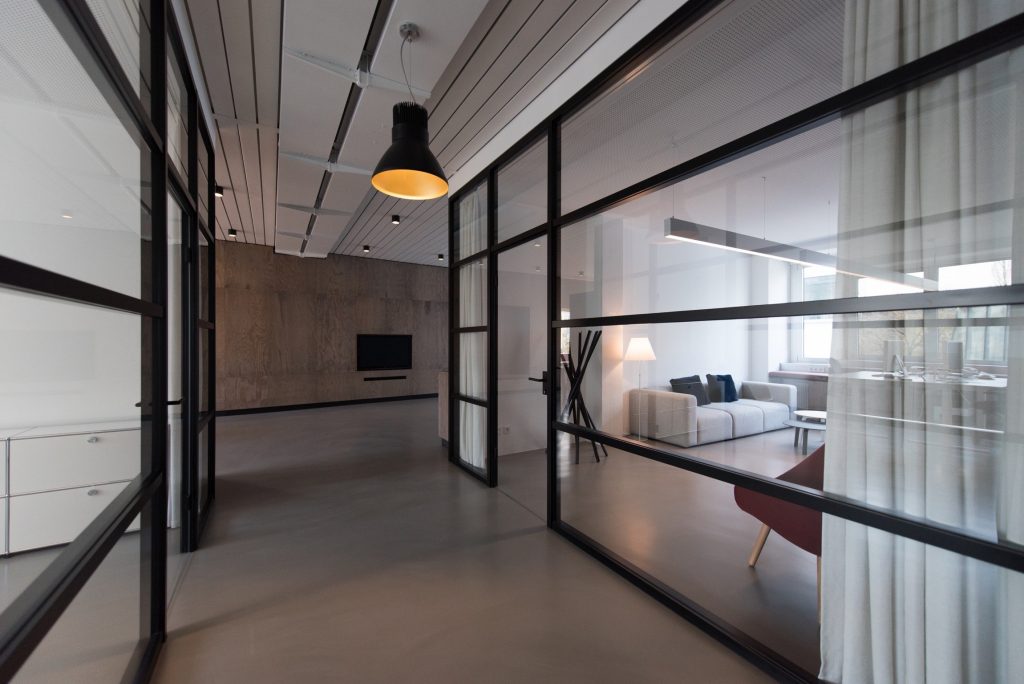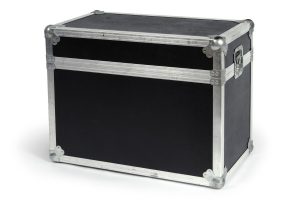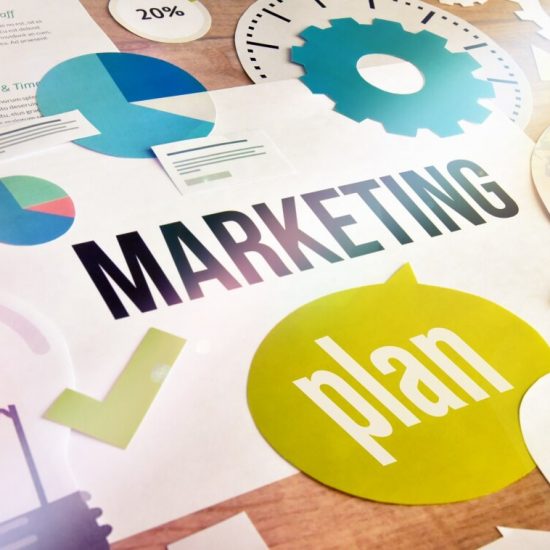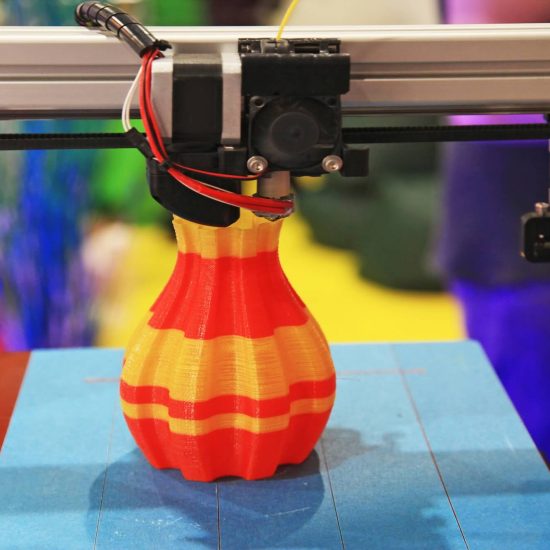1. Build authentic trust and rapport
The most important factor in face-to-face meetings is the simple benefit of being with another human. We are a social species, and are psychologically set up to read body language and facial expressions. Things like eye contact can show trust or doubt, and that can influence how you guide the conversation. Personal chemistry plays a part, too. Some people are convivial and warm, and have a way with other people that just comes naturally. That can really lubricate the wheels of conversation. But tricky customers might also be the most lucrative, and getting under their skin with personal encounters can reap benefits that last for years.
These are factors that are really hard to replicate in the digital space. Even with video conferencing, attendees are either looking at the screen or at the camera, so eye contact never really happens, at least mutually.
For these reasons, in-person networking is already off to a good start. But there’s also the very fact that you’ve put yourself forward for this level of contact and scrutiny, which counts for something. It shows that you’re open, transparent and ready for business.
2. Generate higher quality leads
Events and exhibitions have a self-selecting audience. Everyone who is there is either in your industry or wants to be connected with it in some way. It’s the exact opposite of cold calling, and for that reason alone, the quality of leads is always going to be higher. Also, if you’re exhibiting with a stand, people have to physically approach you, which is one massive hurdle that you don’t have to leap as they’ve already expressed an interest in what you’re offering.
And once you’ve made that initial contact, because you’ve got a captive audience for at least a few minutes, there’s a priceless opportunity for you to give demonstrations, ask and respond to questions, and generally guide the conversation to the conclusion that suits you both. These follow-up opportunities are hard to match digitally, where there’s more time, and people will be distracted by other things. Undivided attention is underrated.
3. Accelerate sales cycles
In business, sales isn’t like buying a T-shirt from a shop. It’s a process, starting with identifying a need, going through a prospecting phase, then building trust, showing competence and ability to deliver, before getting down to brass tacks as the two parties thrash out a mutually beneficial deal. That’s why it can take months or years for companies to land deals, and the bigger the companies, the longer it can take.
Now imagine if the majority of that process was carried out through emails, phone calls and video conferencing. These can rarely be out of the blue – they need to be scheduled in, usually with a half-hour slot to do business before the next opportunity in two weeks’ time. You’re mentally flicking your calendar forwards just thinking about it.
In the conference setting, several of these stages can be completed in person, in minutes. The trick is to make sure key decision-makers are present, people who have the authority to sign off deals or at least move them to the next stage without having to consult higher-ups or calling a meeting. Meet the right person and you could be shaking hands with a new client in a fraction of the time it takes digitally.
4. Gain competitive intelligence
Nobody admits to it but everyone does it – we’re talking about getting a bit of low-level information about how your competitors are winning clients. You can observe their strategies, products and messaging and ask them questions without necessarily revealing who you are. Don’t get too ethically challenged about it though. They are probably doing the same to you. Being face to face can be disarming and immediate in a way that digital correspondence can never replicate.
Needless to say, make sure you stay on the right side of the law. Don’t go poking for trade secrets as that’s taking things to another level that can be costly. But observing how competitors are doing things publicly is fair game. It can even tell you how not to do things.
5. Enhance brand visibility and recognition
It’s well established that meeting people and handling products has a much better rate of retention in people’s memories than seeing pictures or reading information on a screen. People will associate your brand with who they met, so if they leave a good impression, that will percolate through to a better view of the brand.
Storytelling plays a part here, too. Physical presence gives your people the chance to make more of a compelling case for your products or services. They can guide the conversation to where they want to, based on potential clients’ needs and ambitions. A skilled salesperson can do this in their sleep, but it’s infinitely better when the lead is right there in front of them.
6. Access decision-makers directly
Sales isn’t just about the seller getting the customer. There’s just as much pressure on clients to find the optimum deal with businesses, and that’s why they will go to great lengths to seek out key decision-makers in an organisation. Well, why not take them to the exhibition with you?
As we mentioned above, it can speed up the sales process, but simply by knowing that there will be people in attendance who can start the ball rolling, potential clients will approach you looking for deals, safe in the knowledge that there’s an opportunity to make one. No gatekeepers, no barriers – just pure access to representatives who can say yes. And it can all get going from an informal meeting at the stand.
7. Launch products with maximum impact
If you’re launching a product or service, there are few opportunities as ripe as at exhibitions and conferences. There will be people in attendance who have a genuine, vested interest in your offering as it might make a huge difference to their own businesses. And you’ll be in a position to talk them through the product, take questions and gently nudge them towards becoming a customer.
There’s also going to be trade media at events or, in some sectors, a more generic, public-facing media presence. Imagine being interviewed by a journalist who can talk about your product, publish videos and offer impartial reviews about it. This kind of thing can only really happen when you’re both present in person.
8. Build industry partnerships and alliances
Don’t forget about your suppliers. They’re just as vital as your customers, even though they occupy a different column in your accounting sheets. Of course, you are their customer, so they want to keep you sweet, but when you have a great relationship with your suppliers, it helps both of you, and can prevent bottlenecks and other supply issues.
Meeting suppliers at exhibitions is a superb way to cement relationships, and even take them further, making them into strategic partnerships and alliances that could get you through tough times. It’s sometimes hard to shift focus away from making those all-important sales, but you never suffer from striking a great deal with your suppliers.
9. Recruit top talent
Anyone who runs a business will be painfully familiar with the recruiter emails, CVs and LinkedIn invites that pepper the inbox every waking (and sleeping) hour. While it’s good to know that you’re a company that people want to work for, it’s also a little impersonal and perhaps insincere.
At a conference, exhibition or trade fair, however, there are often people there who are looking to take the next step in their careers, and it’s a great opportunity to get to know them. As we said earlier, it’s an environment where the great and the good of your sector are all gathered in one place, and that presents a perfect opportunity for cross-fertilisation between talent and employers.
And let’s not forget, really talented people can pick and choose which companies they work for. Landing someone with enhanced abilities, experience and connections in your business can make a positive difference to your bottom line, however much it costs you to hire them. So as well as you being able to check out potential recruits, your exhibition stand might also become a showcase for your business, which these brilliant people can experience for themselves.
The face to face nature of the conference gives both your company and the potential candidate the opportunity to get to know each other a little more intimately. They can find out about your company culture, its ambitions and the kinds of people who work there. And you can find out if you like the cut of their jib and get a sense of whether they’re a capable, enthusiastic team player with long-term visions that can help you. All this from an informal conversation from a passing attendee.
10. Drive innovation
Innovation happens best when people are bouncing ideas off each other. It rarely happens in a vacuum, with one genius having a lightbulb moment that solves everything. Whether you’re at an exhibition or at an arranged meeting with collaborators, there’s nothing quite like talking with people about your ideas, and getting real-time feedback and understanding on how things can be improved.
It’s even more effective when you can demonstrate prototypes which people can inspect with a 360 degree perspective. People in the know will be able to instantly spot snags and drawbacks of the design, built from experience. They can then explain their misgivings and suggestions with your product development team, who can ask questions and delve deeper into their specialist knowledge.
Being in the same room makes this whole process infinitely quicker and more precise. And when you’re launching products in a competitive sector, every day spent in development is a potential chance for your rivals to gain a competitive edge.
Every performance needs a stage
The exhibition sector is thriving, and it’s largely down to the benefits listed above. People simply respond to meeting in person and being able to enthuse about their products and ask all the right questions to the right people. If you’re looking to exhibit, you need a stand that breaks down that first barrier – people approaching you without needing to be prompted.
That’s where we at Focal Exhibitions excel. We can take your ideas and goals, and turn them into an effective stand that’s appropriate for your sector. Why not get in touch so we can talk about collaborating? We’re looking forward to meeting you – in person, of course.












